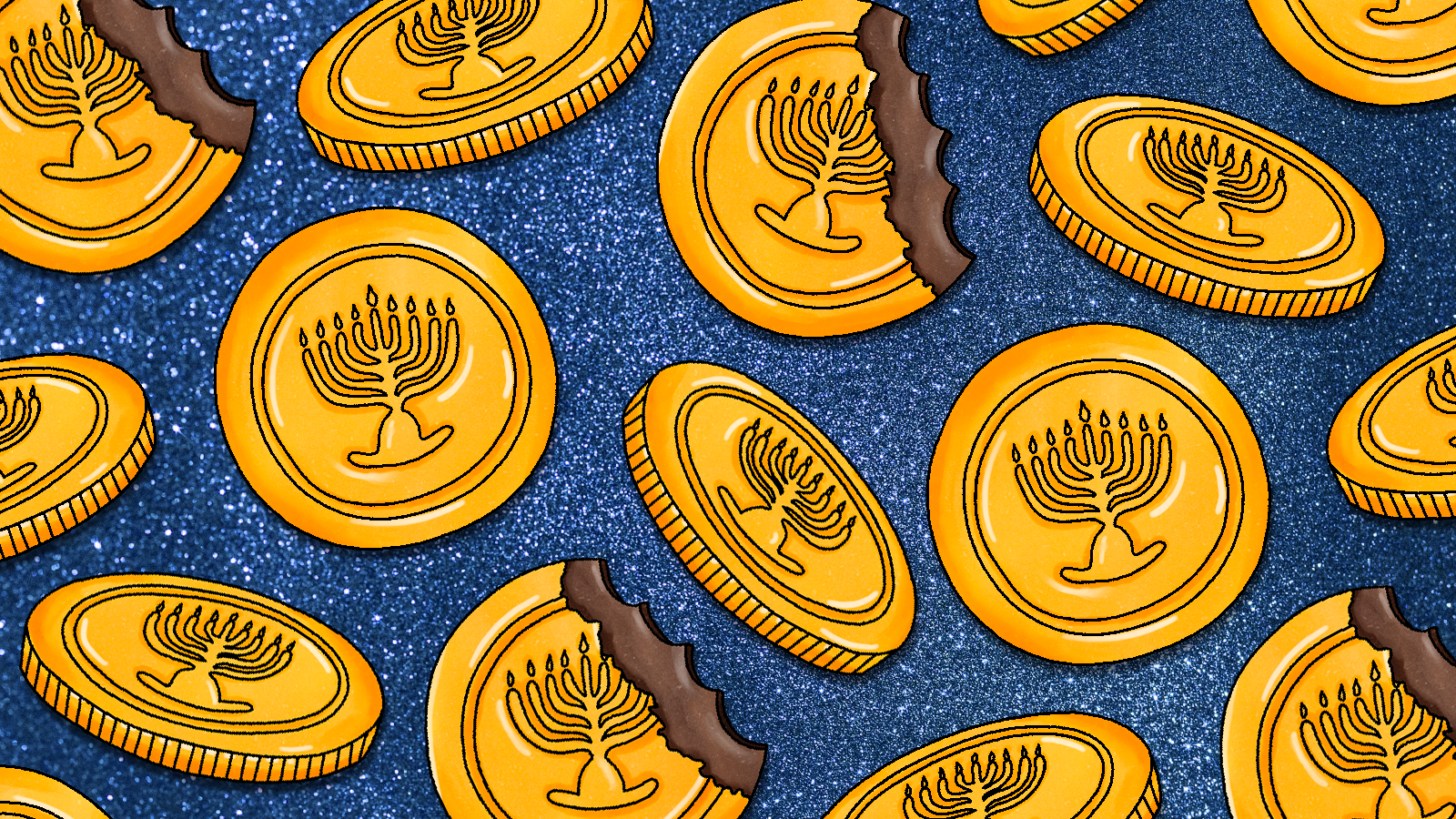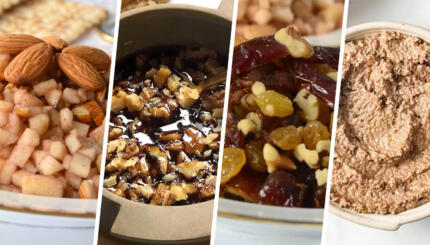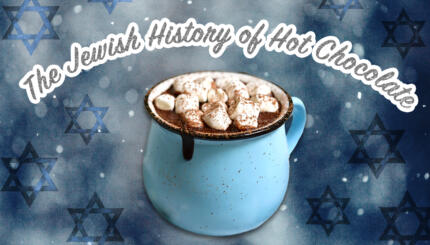Putting your money where your mouth is one of Hanukkah’s most time-honored gastronomic pastimes.
I’m talking about chocolate gelt (Yiddish for “money”), which is traditionally gifted to children as an edible proxy for cash. Long before I began exploring my potential Jewish identity as an adult (subject for a much longer discussion), I was a small child ostensibly raised Roman Catholic, but obsessed with gelt. When the handful of Jewish children in my small town brought their Hanukkah haul of gold-foil chocolate coins to school, I was insanely jealous and subsequently begged my parents to stuff my Christmas stocking with the same small, net bags full of sugar. So intense was my fixation that as I watched a 1980s Olympic champion bite down on her medal and my mother explained that this gesture was intended to communicate the medal was real (hard) gold and not the fake (soft) stuff, my response was something akin to: Why wouldn’t she want it to be chocolate inside?
The subsequent Rugrats Hanukkah special only fueled my fascination, for despite the fact that Phil and Lil explicitly said they disliked the taste of gelt, I was captivated by the religiously sanctioned proto-gambling with shiny edible lucre. (And when Mr. Dreidel slipped on a latke that pretty much sealed the deal with regards to me associating The Festival of Lights with fun times for all.)
The exchange of gelt is a custom that, according to some historians, dates back to 17th century Poland. In homage to the Hasmonenans minting national coins to celebrate the Maccabees’ winning their freedom from the ancient Greeks, Jews gave their children money to give to their teachers, and the children soon demanded a piece of the action. Other experts aver the practice began in response to the Chrisitian custom of tipping religious instructors during the winter holidays. Regardless of its origin, the tradition of pecuniary presents during Hanukkah evolved (or devolved depending on whether your priorities are chocolate or cash) to involve parents distributing chocolate coins to youngsters as funny money to facilitate dreidel competitions. (All players begin with the same amount of gelt and at the beginning of each round, each player places one coin in the collective pot. Players then each take a turn spinning the dreidel and whatever letter it lands on determines the distribution of the gelt; nun = nothing; hay = player takes half the pot; gimel = player takes the whole pot; shin = player contributes one coin.)
The Nosher celebrates the traditions and recipes that have brought Jews together for centuries. Donate today to keep The Nosher's stories and recipes accessible to all.
In the United States, Jewish as well as non-Jewish confectioners tapped into consumer demand for comestible coins in the early 20th century, when Loft’s candy company started producing chocolate gelt encased in gold and silver foil, sold in pouches designed to resemble bank bags. This manufacturing and marketing model was swiftly copied by other chocolatiers across the country.
When it comes to Hanukkah booty, gelt has come a long way. Today, the majority of choco-change consumed by American children (and some sweet-toothed adults) during Hanukkah is made in either Israel or the Netherlands, with the latter nation responsible for the lion’s share of the imports. And the chocolate money magnate to end all magnates is Dutch-based Steenland Chocolate. Founded in 1899 by Gerard Theodore Steeland, Steenland’s Chocoladefabriek (chocolate factory) was originally a simple retail bakery in Gouda (ironically, as its name implies, a pre-eminent site of cheese production). During the post-World War II economic boom, Steenland expanded its sweet offerings to include chocolates, some in the form of coinage.
While the mainstream gelt vended by Steenland has the nostalgia factor, it’s not considered to be the tastiest chocolate on the market, and spare chocolate change leftover from Hanukkah is often relegated to the pantry until the following year. (That is, unless you make this two-ingredient cookie recipe, my preferred way to save myself from stale gelt.)
Of course, you could skip the commercial stuff and opt for the several niche, and often extravagant, gelt minters who have secured a following among more discerning capital connaisseurs. Jacques Torres, aka “Mr. Chocolate,” offers a gourmet rendition of gelt comprising an octet of coins (four dark, four milk), available on Goldbelly. Likewise, legendary See’s Candies produces their own luscious version of lucre in the form of dark and milk chocolate Hanukkah medallions emblazoned with the company’s signature “S.” And if you insist on having your dreidel and eating it, too, Williams-Sonoma sells a full-size chocolate top adorned with edible gold dust that you can spin, then smash open to reveal milk, white and dark chocolate change. It’s the dreidel-pinata mash-up I think we can all get behind.



